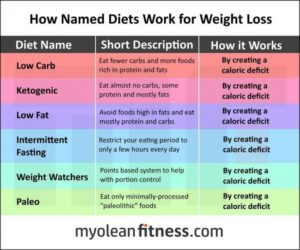Clean Eater: “IIFYM is all about eating junk food.”
Strict Meal Plan Dieter: “IIFYM diet isn’t as good as a meal plan.”
Let us ask you a question…
Are you tired of hearing the above statements?
Are you sick and tired of hearing that an IIFYM diet is poor for your overall health?
I know we are.
You usually tend to see this from those that look at nutrition with a black and white mindset (1).
Or
From those that favor and have an emotional attachment to another nutrition concept such as:
- Intermittent Fasting
- Clean eating
- Paleo
- Keto diet
- Eating cardboard diet 😉
What’s frustrating about this is nutrition shouldn’t be looked at as good or bad or right or wrong or one diet is “better” or “best.”
The way nutrition should be looked at is what we call “conceptual integration.”
Taking concepts from different diets and integrating them together to fit your lifestyle, goals, preferences, and ultimately increasing adherence and consistency which thus produces results.
But, this topic of “conceptual integration” can be a topic for another article.
In this article, we will discuss dispelling the myth of IIFYM is poor for your overall health, the 80/20 and 90/10 approach within an IIFYM diet, and practical applications you can apply immediately.
For now, put your macros and IIFYM flexible dieting calculator away and let’s talk shop!
Dispelling the Myth of IIFYM is Poor for your Overall Health
IIFYM gets a lot of flack outside the IIFYM community.
The main reason being those that have never experimented with it tends to jump to conclusion and think that an IIFYM diet can be predominated by junk food so long as you hit your macronutrient targets.
This is far from the truth.
What’s funny is, long before the IIFYM movement, researchers noted in a 1991 publication that dieting bodybuilders used very limited menus when preparing for bodybuilding competitions and suggested instead that bodybuilders should use the Exchange System (which is very similar as counting macros) for food selection to add variety without altering the distribution of macronutrients (2).
Consume at least 80% of your calories from whole, single item food ingredients and consume at least 2-3 servings of fruits and vegetables, each, per day
A new study out of the International Journal of Sport Nutrition and Exercise Metabolism showed that a macronutrient-based approach to dieting results in at least equal dietary adequacy compared to a traditional, “strict” meal plan based approach (3).
This was a cool study because they had subjects (both male and female competitive bodybuilders) take an online survey and they were grouped by two dietary approaches:
A) Strict meal plan (following a strict meal plan without any food substitutions)
B) Macronutrient based (self-selected foods so long as they hit their macronutrient targets)
Here’s what the results found:
– Males consumed less than the recommended daily allowance (RDA) or adequate intake (AI) of vitamins A, D, E, potassium, and fiber
– There was no significant difference between the males following a strict meal plan or a macronutrient based diet
– Females following the macronutrient based diet consumed more protein, sodium, and vitamins E and K, fiber, folic acid, magnesium, and iron
– A macronutrient or IIFYM diet approach will not result in micronutrient inadequacies to any greater degree than a traditional strict meal plan approach
– Remember in women, it might even be a better approach to follow an IIFYM diet
This study is a great piece of a large puzzle that lends credence to showing that an IIFYM diet approach is not poor for your overall health.
The 80/20 and 90/10 Approach Within an IIFYM Diet
Now that we have the myth of an IIFYM diet isn’t good for your overall health dispelled, that doesn’t mean that an IIFYM diet approach should be abused.
We see time and time again people posting pictures on Instagram of their ice cream, pop tarts, donuts, what have you.
- It’s immature and misleading to do this
- This is what gives IIFYM a bad rep
- If you really are predominating your IIFYM diet with highly palatable and refined food sources, you are doing yourself and your health a dis-service
Now, if you aren’t doing this, enter the 80/20 and 90/10 approach within an IIFYM diet.
This can also be looked at as “daily linear allotment of indulgence foods rule” where 10-20% of your calories can come from indulgence foods each day.
Here’s a real-world example:
You have 2,000 calories to work with for the day
You decide to use 20% of the calories (2,000 x .20 = 400 calories) towards non-traditional foods, “dirty foods,” whatever you want to call it
That means that 1600 of your calories should be predominated by whole and minimally refined food sources
Once you meet your daily protein goal and fiber goal, the remainder 400 calories can come from semi-junk to junk food
Basically, discretionary calories comprise the margin of leftover calories that can be used flexibly once essential nutrient needs are met.
Still skeptical of a daily linear allotment of indulgence foods rule?
The current Dietary Reference Intakes (DRI) report by Food and Nutrition Board of the Institute of Medicine lists the upper limit of added sugars as 25% of total calories (4).
Moreover, a review by Gibson and colleagues found that 20% of total calories from added sugars is roughly the maximum amount that won’t adversely dilute the diet’s concentration of essential micronutrition (5).
Both of these figures are in reference to refined, extrinsic sugars, not naturally occurring sugars within whole foods like fruit or milk.
Discretionary Calories
Finally, the USDA has attempted to teach moderation with their concept of the discretionary calorie allotment, defined as follows (6):
“The difference between total energy requirements and the energy consumed to meet recommended nutrient intakes.”
Basically, discretionary calories comprise the margin of leftover calories that can be used flexibly once essential nutrient needs are met.
Coincidentally, the USDA’s discretionary calorie allotment averages at approximately 10-20% of total calories (7).
Take note that discretionary calories are not just confined to added sugars. Any food or beverage is fair game. The USDA’s system is still far from perfect since it includes naturally-occurring fats in certain foods as part of the discretionary calorie allotment. This is an obvious holdover from the fat-phobic era that the USDA clings to, despite substantial evidence to the contrary (8).
We have had a ton of success with ourselves and clients with the 80/20 and 90/10 rules. We highly recommend using this tool within your IIFYM diet.
Practical Applications
- A macronutrient or IIFYM diet approach will not result in micronutrient inadequacies to any greater degree than a traditional strict meal plan approach
- When implementing a macronutrient or IIFYM diet approach, remember to provide 5-10g ranges for each macronutrient, and allow for a fallback strategy if a target is missed, such as hitting a minimum protein target and 100 kcal energy intake range
- A regular dose multivitamin for men and women is good insurance to have in your IIFYM diet
- Consume at least 80% of your calories from whole, single item food ingredients and consume at least 2-3 servings of fruits and vegetables, each, per day
- Utilize the 80/20 and 90/10 rule within an IIFYM diet. We recommend if you are in the offseason or maintenance phase, you can be a bit looser and flexible, using the 80/20 rule. Yet, if you are in a dieting phase or contest prep, then the 90/10 rule will be a better option as you have a finer line to walk within calories
Wrap Up
Now that we have dispelled the myth of IIFYM isn’t good for your overall health, we want you to remember that IIFYM diet approach is such an amazing and awesome concept within nutrition, so don’t abuse it.
Utilize the 80/20 and 90/10 tool within IIFYM so that you can enjoy your diet, tailoring it around your preferences, and lifestyle.
We will leave you with these 2 quotes:
“The best diet for long term adherence is the one based on foods you love. Honoring personal preference Is the most overlooked and underutilized tool for long term success in a weight loss plan.” – Alan Aragon
“the key to long term sustainability isn’t in perfection or restriction; it’s in mastering the art of getting through periods of stress, fatigue, chaos, lack of motivation, and unexpected events both big and small- the unpredictability that is life” – Hill. AJ
The post Dispelling the Myth That IIFYM is Poor for Your Overall Health appeared first on IIFYM.
from IIFYM Recipes and Articles – IIFYM http://ift.tt/2rVpR3t






